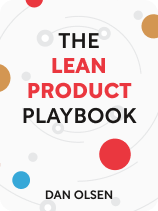

This article is an excerpt from the Shortform book guide to "The Lean Product Playbook" by Dan Olsen. Shortform has the world's best summaries and analyses of books you should be reading.
Like this article? Sign up for a free trial here.
Is your product idea truly viable? How can you be sure customers will want what you’re offering?
Validating a product idea is crucial for any entrepreneur or business. It involves testing your concept with potential customers to ensure there’s genuine interest and demand. This process can save you time, money, and heartache in the long run.
Keep reading to explore how to validate a product idea effectively and give your customers what they ask for.
Validating Your Product Idea
Once you’ve identified your MVP features, validate your product idea either by conducting tests or by directly interacting with customers. Dan Olsen suggests you validate three things: the value of your product itself, your user experience (UX) design, and your product marketing.
(Shortform note: In Inspired, Marty Cagan also suggests you evaluate product value and user experience when testing product ideas, but he adds that you should also assess feasibility and business viability—whether your company can reasonably build the product and whether the product makes sense for your company’s larger business strategy.)
Let’s get into the details of Olsen’s advice on how to validate a product idea.
Method 1: Conduct Tests to Measure Marketing Effectiveness
Another way to validate your product is to test the effectiveness of your marketing—whether prospective customers find your product offer enticing. They allow you to get feedback on your product messaging so you can measure interest and alter your marketing approach if needed. Olsen suggests several tests to validate marketing:
1) Landing Page Test: Create a landing page for your product and include a call-to-action visitors can click. This can include a video explaining your product’s features and why customers should purchase it. You can gauge demand and assess the effectiveness of your product messaging based on how many visitors click on your call-to-action.
2) Advertising Test: Construct ad campaigns that direct traffic to your landing page. Experiment with different messaging and designs and compare clickthrough rates to test your hypotheses about your target market.
3) A/B Testing: Create two versions of your web page (A and B), differing in design, content, or layout, and then introduce your visitors randomly to either version. You can then track which version leads to more buttons clicked or forms filled, for instance, to determine which version stimulates higher engagement. By comparing user responses to the two versions, you can refine and optimize your landing page using real user behavior as a guide.
4) Crowdfunding: Initiate a crowdfunding campaign for your project and include a compelling pitch with a detailed description of your product’s features and unique selling points. You can determine the appeal of your product by how many backers pledge their support.
| Finding Language-Market Fit The tests that Olsen discusses can all aid you in achieving language-market fit—the most appealing way to describe your product that convinces your target market to buy. Other experts explain why language-market fit is as important as finding product-market fit: People typically skim content instead of reading it fully—a tendency known as “attentional control”—in hopes of accomplishing a goal. In other words, people scan your messaging quickly to decide whether it’s worth spending more time on your site. Because of this, language used in marketing, and particularly in online advertisements and landing pages, has to practically replicate the thought process of your target market. Mirroring what they’re thinking and feeling is the only way you can capture and hold the attention of prospective customers. Landing page designs, advertisement messaging, A/B testing, and even crowdfunding pitches can all test how well you can capture and maintain the attention of visitors. |
Method 2: Conduct Customer Interviews
Olsen writes that conducting in-person interviews with target customers is one of the most effective ways to validate your product idea and UX design. Getting feedback from real prospective customers allows you to understand whether customers find your product valuable and why.
To validate your product idea, you’ll need to show customers some version of your product. Olsen recommends that you present a range of product design prototypes that allow you to test your hypotheses without having a completed product. The closer the prototype behaves and appears to the final product, the better and more accurate feedback you’ll get.
Olsen describes several design prototypes you can consider:
- Wireframes: A simple, sketch-like diagram showing the basic layout and functionality of your product.
- Mockups: A more detailed visual representation of what your final product will look like, including color, font, and images.
- Manual MVPs: Interactive versions of your product that require human involvement to simulate the experience of using the final product. One example is what’s known as a Wizard of Oz MVP, which has a human operator perform the tasks that would typically be automated in the final product, giving the illusion of a functioning system. This allows you to gather valuable insights before investing in further development.
Olsen suggests you also get feedback on your product’s user experience (UX) design. UX is how a user interacts with your product or service and makes use of its features. Olsen writes that a product with good UX is both intuitive and enjoyable to use. When you interview customers, get feedback on UX design by evaluating how easy it is for customers to complete certain tasks. The more effort required, the more difficult your product is to use and the less valuable it becomes to users.
Now that you know what elements of your product to test, how do you get quality feedback from customers? To conduct effective interviews, Olsen suggests you take the following steps.
1. Recruit target customers. Advertise on odd job platforms like TaskRabbit, approach people in-person, or work with customer research companies. Aim to get five to eight customers per round of testing. To ensure you get customers in your target market, use screening questions that qualify or disqualify respondents. For example, if your product is for athletes, you might ask survey participants about their weekly exercise hours and exclude those who exercise less than 10 hours a week.
2. Conduct in-person interviews with one participant at a time. In-person interviews help you develop rapport with the participant and pick up on nonverbal cues. Additionally, people express themselves more truthfully when you interview them alone, leading to more accurate results. Olsen explains that people often hesitate to openly share their thoughts in front of others, and they may also change their beliefs after hearing other people’s opinions.
3. Ask open-ended questions. Some participants may be less expressive than others. As participants interact with your product prototype, encourage them to share their thoughts by asking open-ended questions—those that start with “why,” “what,” or how.”
4. Avoid intervening. Olsen suggests you avoid the temptation to step in when the participant has difficulty using your product. If customers ask for your input, shift the focus back to them with another question. For example, if a participant says they can’t find a search function, you could ask: “Where would you expect to find the search function on this page?” This method helps you to collect unbiased feedback.
Make Adjustments & Repeat
After each round of testing, use the feedback you received to revise your hypotheses and change your MVP to improve product-market fit. To determine what changes to prioritize, figure out the percentage of users who shared similar comments or issues. Continue to cycle between testing your MVP and refining it according to the feedback you receive until you feel confident that the product will satisfy your target customer’s needs.
(Shortform note: If you don’t feel confident in your product after multiple rounds of testing, how do you know whether to pivot or to keep testing? In The Lean Startup, Eric Ries says most startups pivot too late, and he suggests you clearly define what failure looks like for your product to avoid this pitfall. Establish clear hypotheses about what metrics you need to hit. Then, if you fail to meet these metrics or if your tests are leading to less progress, you may decide that it’s best to change directions. Ries also suggests you hold “pivot or persevere” meetings with your team to help make these decisions.)

———End of Preview———
Like what you just read? Read the rest of the world's best book summary and analysis of Dan Olsen's "The Lean Product Playbook" at Shortform.
Here's what you'll find in our full The Lean Product Playbook summary:
- An entrepreneur’s guide to making the best product on the market
- How to create a new product without gambling on the results
- How and where to find your target market and audience






